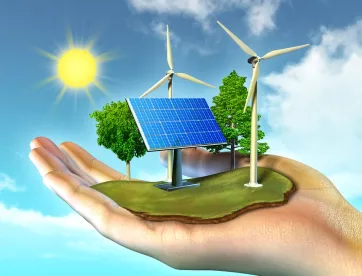A new federal tax incentive enacted in the 2017 tax reform package may provide a boost to many new facilities, repowering projects, and storage facilities. Qualified equipment could include a variety of energy and materials storage equipment, refining equipment, generating equipment, and extraction equipment.
The Qualified Opportunity Zones (“QOZ”) incentive provides attractive tax benefits for investors with capital gains to invest in property and businesses located in geographic areas that are designated as QOZ. Recently released regulations provide significant clarity and highlight how valuable the QOZ incentive can be for qualified investments. See our October 23 alert for a discussion of how the proposed regulations answer many important questions that provide the certainty investors, developers, and entrepreneurs in the energy and infrastructure industries need to proceed with QOZ investments and projects.
How does the QOZ incentive work?
The QOZ incentive is designed to encourage long-term investment in over 8700 low-income areas in rural and urban parts of all 50 states, the possessions, and the District of Columbia that have been designated by the Secretary of the Treasury as QOZs. Many of the areas designated as QOZs already include significant development of oil and gas and power assets, including portions of the Gulf Coast and Permian Basin, and vast areas of Alaska.
The benefits of the QOZ incentive are available when a taxpayer disposes of a capital asset and, within 180 days, invests capital gains in a qualified opportunity fund (“QOF”) that invests in QOZ property, either through a direct investment in QOZ tangible business property or a newly-issued equity interest in a partnership (including an LLC) or corporation operating a business in a QOZ (“QOZB”).
A QOF can be a corporation or a partnership (including an LLC) for U.S. federal income tax purposes formed for the purpose of investing in QOZ property. A QOF can function as an investment fund, a private investment entity, or many options in between. The major requirement of a QOF is that at least 90% of the QOF’s assets (measured by cost or value, depending on the applicable facts) must be invested in QOZ property as described above.
What are the benefits of the QOZ incentive?
The QOZ incentive consists of three tax benefits for investors.
-
First, federal taxes on capital gains invested in QOFs may be deferred until 2026.
-
Second, depending on how long the taxpayer holds the QOF investment, the basis of the asset sold to generate proceeds for investment in the QOF may be increased by up to 15%, thus reducing the capital gain that is eventually recognized.
-
Third, if the taxpayer holds the QOF investment for at least 10 years, capital gains realized upon disposition of the investment are free from federal income tax due to a step up in basis of the investment to its fair market value at the time of disposition.
Who can use the QOZ incentive?
Any U.S. person and certain non-U.S. persons can invest in a QOF and use the QOZ incentive. This includes individuals, corporations, partnerships, and trusts. Partners investing capital gains from a partnership have a longer window to invest in a QOF than the partnership would.
How does the QOZ incentive help renewables projects?
Many QOZs are located in desirable locations for refineries, generation facilities, and transmission assets. The universe of potentially qualified investments includes newly issued equity interests of a QOZB as well as investments by a QOF in tangible property—for example, generation and transmission equipment, refineries, and buildings. Moreover, the QOZ incentive:
-
is technology agnostic;
-
is available for property used for storage, generation, transmission, refining, and ancillary activities, generally including turbines, buildings, materials storage tanks and silos, transmission towers and lines, substations, and operations facilities;
-
is available for new installations, as well as repowering or rehabilitation of existing installations acquired after December 31, 2017, when expenditure thresholds are met and the work required to meet those thresholds is completed within a 30-month period;
-
is compatible with the structuring techniques familiar to investors, developers, and operators;
-
offers new options for tailoring investment structures to suit certain investors; and
-
may be combined with other federal tax incentives.
The benefits of leveraging the QOZ incentive can be considerable. However, the terms and conditions to meet QOZ requirements are quite complex, so it is important that investors and developers obtain good counsel in order to avoid costly mistakes that could result in loss of QOZ benefits. Our Opportunity Zones and Energy, Infrastructure, and Resources teams would be happy to help you determine how the QOZ incentive can help your projects pencil out and to make sure you are complying with all QOZ requirements.
Opportunity for Treasury comments/more guidance coming
The U.S. Treasury has requested taxpayer comments on a variety of points in the Proposed Regulations and on several issues to be addressed in forthcoming proposed regulations expected by the end of the year. Taxpayers may provide responses to these requests and other comments through December 28, 2018. Comment opportunities include how long a QOF may take to reinvest proceeds in qualified assets, the treatment of vacant land, how to determine if at least 90% of a QOF’s assets are qualified assets, how exits must be structured, and when the 30-month period for repowering or other rehabilitation activities of existing projects begins. Our cross-practice Opportunity Zones team would be happy to help your voice be heard during the regulation writing process.




 />i
/>i
